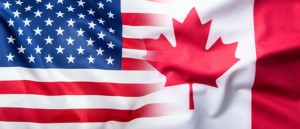Christmas is but five months away. If you’re going to be looking for the hottest toys, you can’t start early enough. Hasbro has released a list of what they think will be the most popular toys come December.

“Hanazuki” MoodGleam Wearable, $20. Colors change to reflect the mood of the wearer, just like the bracelet worn by the popular cartoon character, Hanazuki. For ages 6 and up.
Play-Doh Letters and Language Set, $20. Kids can practice letter recognition and pronunciation using the alphabet stampers and play mats. For ages 2 and up.
Spider-Man: Homecoming Vulture Attack Set, $45. Help Spider-Man defeat Vulture in this Queens, New York, street scene playset that lets kids play out the battle however they imagine. For ages 4 and up.
“Star Wars” Black Series Poe Dameron Electronic Helmet, $80. Although they have yet to test, the experts at the Good Housekeeping Institute love the interactive aspect of this role-playing helmet. Put the device on and the surround sound will immerse you in the life of skilled X-Wing fighter pilot, Poe Dameron. For ages 8 and up.
Littlest Pet Shop Cruise Ship Playset, $40. This playset will let the Pet Shop crew set sail on a luxurious cruise. The kit comes with three new pets as well as nautical accessories. For ages 4 and up.
Marvel Legend Series 12-Inch Figures, $50. Add to your child’s super hero collection with these extra-detailed 12-inch figurines from the Legend Series. The “Deadpool” character is available now and Thor and Hulk figurines will join in the fall. For ages 4 and up.
Pie Face Sky High, $25. The original version of this hilarious game was a favorite in the Good Housekeeping Institute’s Toy Test last year, so we’re excited to get our hands on this edition. Inspired by the Strong Man carnival game, this new rendition has a mask that is three feet tall. The speed at which the pie will fly all depends on how hard the player hits the launcher with an included plastic hammer. For ages 5 and up.
Coinhole, $15. Available this summer. Players compete in this game by bouncing coins off the table, onto the board and into the hole. The first to sink all of their coins wins! For ages 8 and up.
“BeyBlade” Burst Avatar Attack Battle Set, $50. Available in August. Let it rip and unleash your attack! Inspired by the series Beyblade, players launch their spinning tops into an arena to compete against one another to spin the longest. The last one standing takes the winning title. For ages 8 and up.
Disney Princess Dance Code Belle, $120. Available this fall. We know that Belle has always been a curious learner, but now she is dabbling in coding. Through an app, kids will learn basic techniques with her and can even connect the dots to program a dance routine for Belle to perform before their eyes. For ages 5 and up.
Furreal Roarin’ Tyler, the Playful Tiger, $130. Available this fall. Furreal has been a hit in the Good Housekeeping Institute’s Toy Test in the past and our engineers are excited about the new interactive tiger for kids to play with this holiday season. For ages 6 and up.
Furreal Makers Proto Max, $120. Available this fall. Another new toy from one of the Good Housekeeping Institute’s favorite brands, this futuristic dog comes with a customizable personality that makes each pup unique. For ages 6 and up.
Get a Grip, $20. Available this fall. Find out just how useful your thumbs are in this game that has players attempting to complete dozens of tasks without using their thumbs. For ages 8 and up.
Marvel Legends Series Star-Lord Electronic Helmet, $100. Available this fall. The most gleaming features of this helmet are the LED light up eyes, authentic sound effects and the fact that it is Bluetooth compatible, meaning you can sync up your music to the built-in speakers and rock out. For adults only.
Hearing Things, $20. Available this fall. Hilarity will ensue in this game that challenges players to put on noise-cancelling headphones and read the lips of their teammates. The challenge is to guess as many phrases as possible before time runs out. For ages 12 and up.
Marvel’s “Thor: Ragnarok” Gladiator Hulk Interactive Figure, $35. Available this fall. Fans can have their own 13-inch electronic Hulk figure that they can control by the push of a button. This version of Hulk also interacts with the electronic Thor figure. (Sold separately). Ages 4 and up.
Marvel’s “Thor: Ragnarok” Rumble Strike Hammer, $20. Available this fall. The foam edges will let your child channel the strength of Thor without actually wreaking havoc on your house. For ages 5 and up.
Nerf Nitro Motofury Rapid Rally, $50. Available this fall. The newest member of the Nerf family comes with one blaster, one high jump ramp, one long jump ramp, nine Nerf Nitro foam cars and 12 obstacles, leaving your child with a hands-on game safe for both inside and outside. For ages 5 and up.
Pour Taste, $20. Available this fall. Kids who love weird food combinations will get a kick out of these challenges. Players pick their liquid ingredients, spin the spinner and the game tells them which they have to mix up. From there, they can choose to drink up the crazy concoction or take a pass. For ages 8 and up.
“Star Wars: Forces of Destiny” Adventure Figure & Friends Assortment, $25. Available this fall. R2-D2 makes the perfect companion to the Princess Leia Organa figure for your child’s collection from the galaxy far, far away. Each comes with their own unique heroic action moves to prepare them for their galactic missions. For ages 4 and up.
“Star Wars: Forces of Destiny” 11-inch Adventure Figure Assortment, $20. Available this fall. Similar to the one above, the 11-inch action figure assortment includes Princess Leia, as well as Rey of Jakku, Jyn Erso and Sabine Wren. Each is sold separately and, unlike the other, don’t come with any little companions (like R2-D2). For ages 4 and up.
Baby Alive Sweet Tears Baby Doll, $50. Available this fall. The newest model from the Baby Alive line is the most expressive yet with the ability to frown, cry real tears and show signs of a cold. For ages 3 and up.
“Star Wars: Forces of Destiny” Bladebuilders Extendable Staff, $20. Available this fall. Kids can pretend that they themselves are the heroic scavenger Rey of Jakku with this extendable staff. It’s compatible with Bladebuilders Lightsabers, making for even more creative methods of defense. For ages 6 and up.
Tickle Me Elmo, $30. Available this fall. Elmo’s hysterical laugh is back for a new generation of fans. This new Elmo is a little smaller, lighter and softer than he has been in years past, but still comes with that infectious cackle. For ages 18 months to 4 years.
Marvel Legends Series “Thor” Mjolnir Electronic Hammer, $100. Available this fall. Made for elevated role-playing, this die-cast metal pommel hammer features intricate detailing , SFX and light up lightning effects. For adults only.


